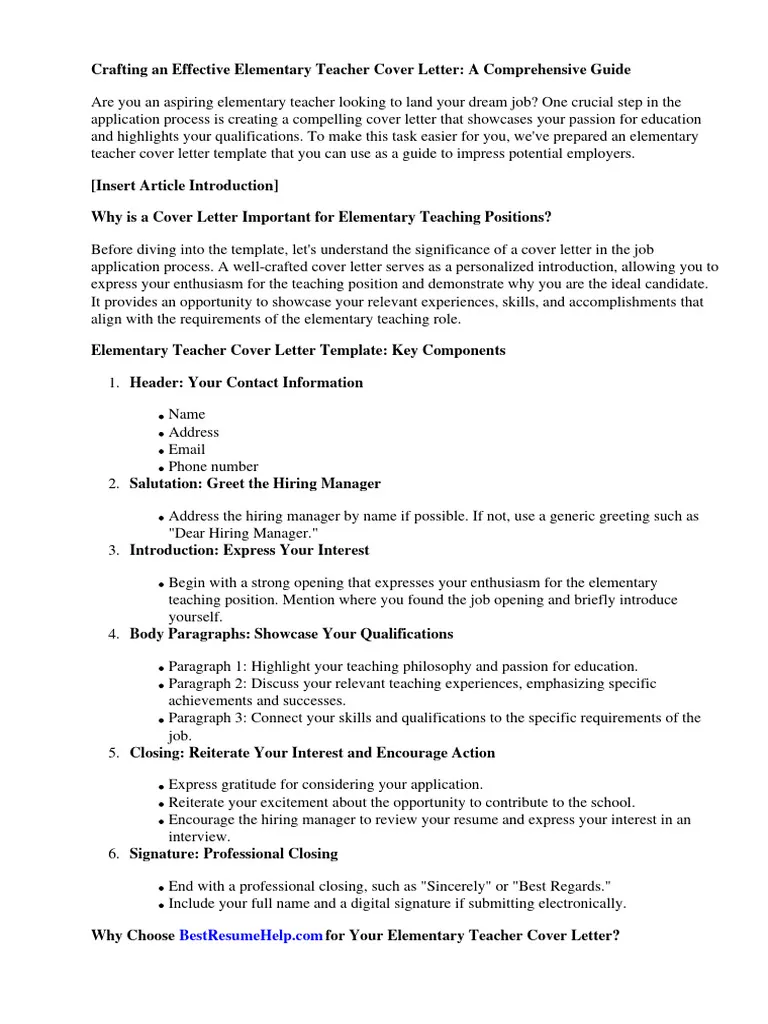Understanding the Importance of a Cover Letter for Elementary Teachers
In the competitive world of elementary education, securing a teaching position requires more than just a strong resume. A well-crafted cover letter serves as your personal introduction, providing an opportunity to showcase your personality, passion, and qualifications in a way that a resume alone cannot. It’s a crucial tool for making a memorable first impression and demonstrating why you are the ideal candidate for the role. A compelling cover letter can significantly increase your chances of landing an interview, setting you apart from other applicants and highlighting your unique strengths.
Why a Cover Letter is Crucial
The primary purpose of a cover letter is to express your interest in the specific teaching position and school district. It allows you to provide context to your resume, explaining how your skills and experiences align with the school’s needs and values. It also provides an opportunity to expand on experiences mentioned in your resume, adding detail and demonstrating your understanding of the role and the school’s mission. Moreover, a cover letter shows your communication skills, attention to detail, and professionalism, qualities that are essential for effective teaching. It also allows you to demonstrate your ability to connect with children and parents.
Making a Great First Impression

Your cover letter is often the first impression you make on a hiring committee, so it’s vital to make it count. Start with a strong opening that grabs the reader’s attention. Tailor your letter to the specific school and position, showcasing your knowledge of the school’s culture and values. Highlight relevant skills and experiences, emphasizing how you can meet the needs of their students. The tone should be professional yet enthusiastic, reflecting your passion for teaching and your commitment to student success. A well-written cover letter sets the stage for a positive first impression and encourages the reader to learn more about you.
Key Components of a Stellar Elementary Teacher Cover Letter
A successful cover letter for an elementary teaching position includes several key components that must work together to create a compelling narrative. Each element should contribute to a clear, concise, and enthusiastic presentation of your qualifications and aspirations. By carefully constructing each part of your letter, you can increase your chances of making a lasting positive impression on potential employers. Focusing on these essential components allows you to demonstrate your ability to communicate effectively, highlight your skills, and express your passion for elementary education, making you a more competitive candidate.
Contact Information & Salutation
Begin with your contact information: your name, address, phone number, and professional email address. Ensure your email address is professional. The salutation should be formal and personalized. If possible, address the hiring manager by name; research the school’s website or LinkedIn to find the appropriate person. If you cannot find a name, use a general greeting like ‘Dear Hiring Committee’ or ‘Dear Principal [Last Name]’. Avoid generic greetings such as ‘To Whom It May Concern’ as they lack personalization.
Crafting a Compelling Opening Paragraph
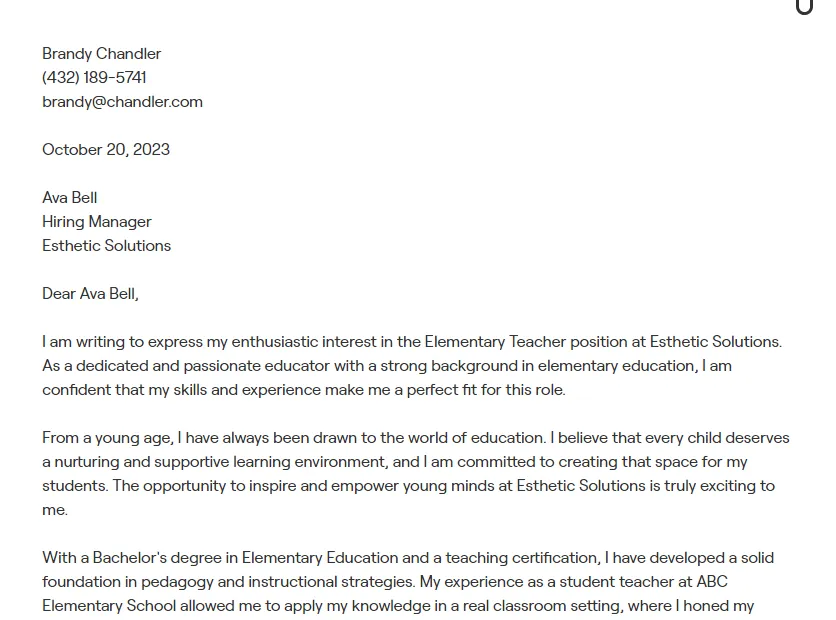
The opening paragraph should immediately grab the reader’s attention and state your purpose. Clearly mention the specific position you are applying for and where you saw the job posting. Briefly express your enthusiasm for the opportunity and the school. Highlight a key skill or experience that aligns with the school’s values or the job requirements. This opening paragraph sets the tone for the rest of your letter and encourages the reader to continue reading. A well-crafted first paragraph immediately showcases your interest, providing a snapshot of why you are a suitable candidate.
Highlighting Your Qualifications and Experience
In the body of your cover letter, highlight your relevant qualifications and experiences. Focus on skills and experiences that are directly applicable to the elementary teaching position. Mention specific examples of how you have successfully taught or worked with children. Use the STAR method (Situation, Task, Action, Result) to demonstrate your abilities by describing a situation, the task you undertook, the actions you took, and the positive outcomes achieved. This method makes your experiences more concrete and provides a clear picture of your competence.
Showcasing Your Teaching Philosophy
Include a concise summary of your teaching philosophy. Describe your beliefs about education, your teaching style, and your approach to classroom management. Explain how you create a positive and engaging learning environment. Mention strategies you use to differentiate instruction and cater to diverse learners. Your teaching philosophy should reflect your commitment to student success and your ability to create a supportive and inclusive classroom. Your philosophy should align with the school’s values.
Demonstrating Your Passion for Elementary Education
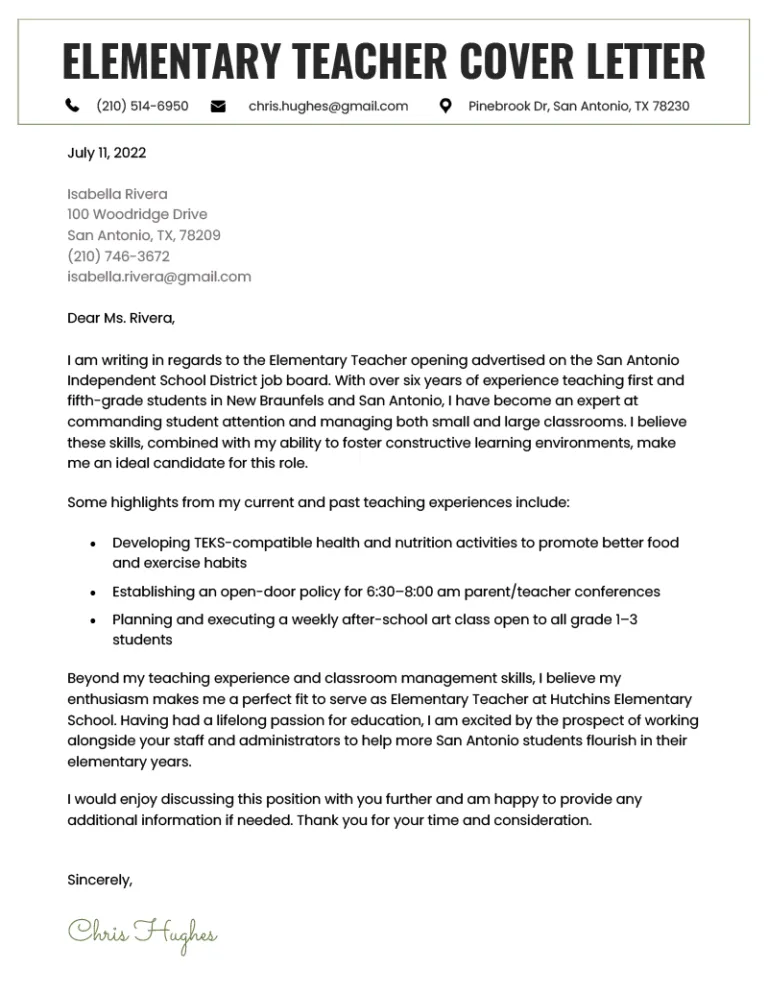
Express your genuine enthusiasm for elementary education. Share why you enjoy working with young children and what motivates you to be a teacher. Mention any special interests or skills that you bring to the classroom. Highlight your commitment to creating a positive learning environment where children feel supported and encouraged. Let your passion shine through your writing; this will show the hiring committee your dedication to the role and its students. This adds a personal touch, setting you apart from other applicants.
Quantifying Your Accomplishments
Whenever possible, quantify your accomplishments to provide concrete evidence of your impact. Use data to support your claims about your effectiveness as a teacher. For instance, mention the percentage of students who improved their test scores under your guidance or the number of parents who commended your teaching. Providing quantifiable results provides a more compelling case and demonstrates your ability to achieve specific results. Quantifiable achievements add credibility and showcase your impact.
Tailoring Your Cover Letter to the Specific School
Customize your cover letter for each school you apply to, showing you are serious about the opportunity. Generic cover letters are easily recognizable and often discarded. By tailoring your letter to each school, you demonstrate a genuine interest in the position and a commitment to the school’s specific needs and values. Take the time to research each school thoroughly and understand its unique characteristics.
Researching the School’s Values and Mission
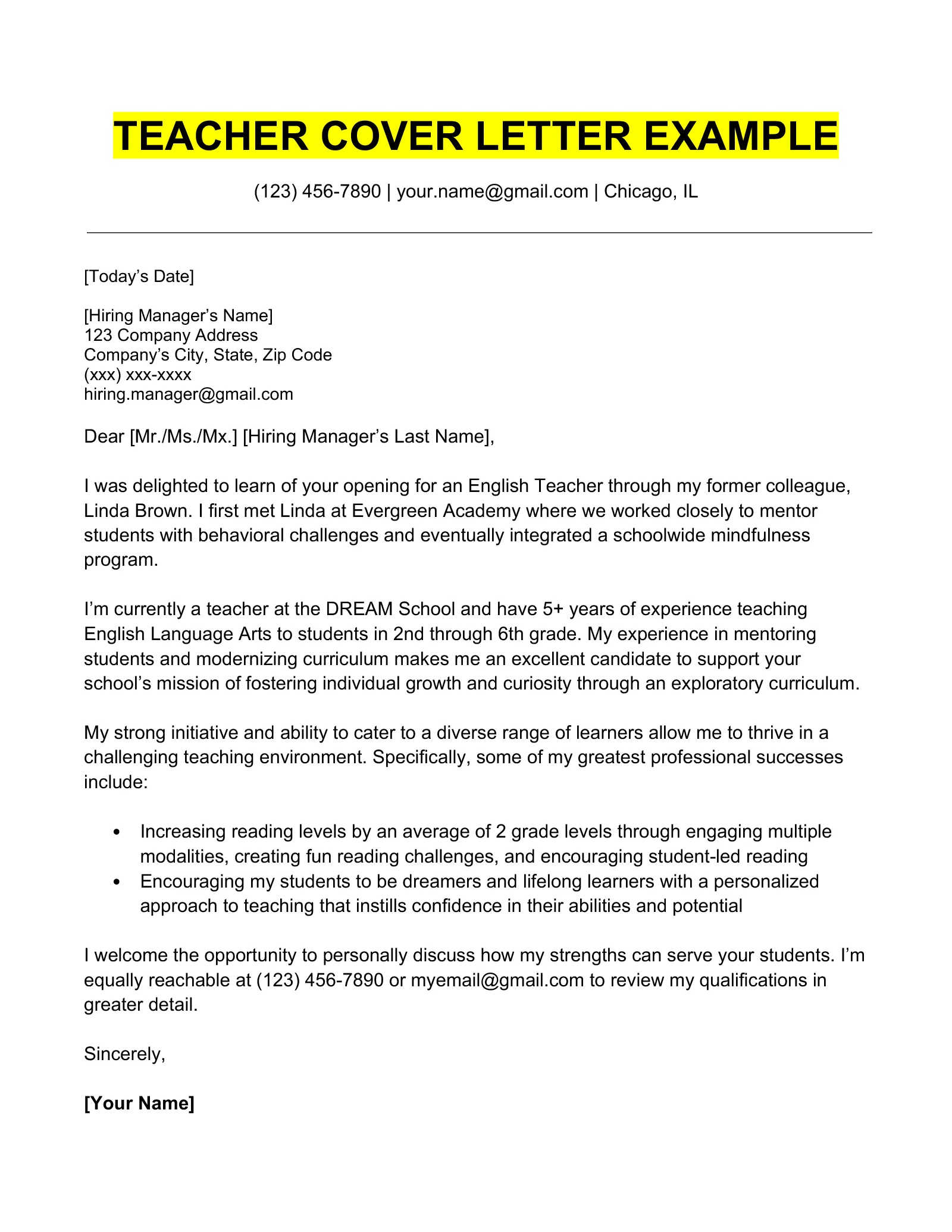
Before writing your cover letter, research the school’s mission, values, and programs. Visit the school’s website, read its mission statement, and browse its social media pages. Identify the school’s focus areas, such as STEM, arts integration, or community involvement. Use this information to align your qualifications and experiences with the school’s specific needs. Demonstrate how your skills can contribute to the school’s success, aligning your teaching philosophy and experience with the school’s core principles.
Personalizing Your Letter
Personalize your cover letter by addressing the hiring manager by name. Mention specific programs or initiatives at the school that interest you. Show that you have taken the time to learn about the school and understand its needs. Highlight how your skills and experiences align with these specific requirements. Personalization shows your genuine interest, demonstrating your awareness of the school’s needs and culture.
Highlighting Relevant Skills and Experience
Focus on the skills and experiences that are most relevant to the elementary teaching position. For example, highlight your experience with specific grade levels, curriculum development, or classroom management. Mention any specialized training or certifications that are applicable. Tailor your letter to the job description, emphasizing the skills and qualifications the school is seeking. Demonstrating relevant experience makes it easy for the hiring committee to see how well you fit the role. Emphasize transferable skills.
Emphasizing Classroom Management Skills
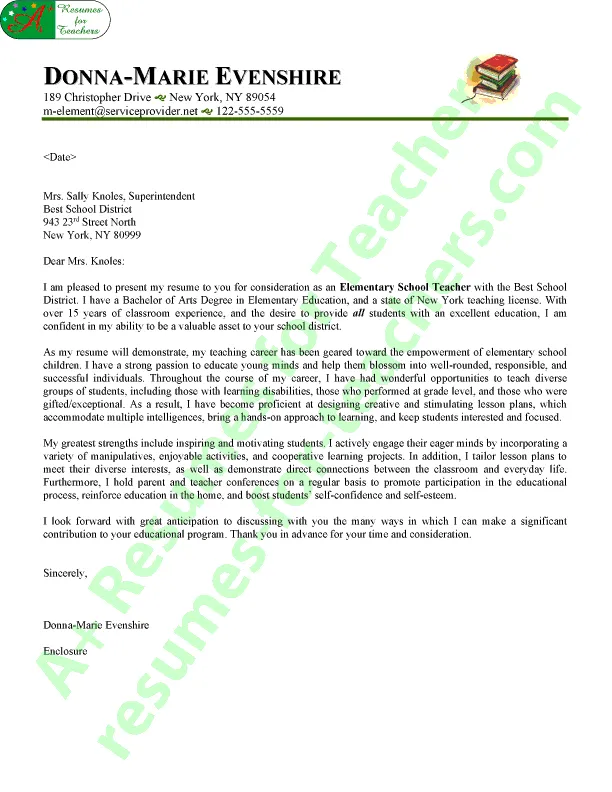
Effective classroom management is crucial for a successful elementary teacher. In your cover letter, emphasize your ability to create a positive and structured learning environment. Describe your strategies for managing student behavior, promoting engagement, and maintaining a productive classroom. Mention any specific classroom management models or techniques you use. Highlight your ability to establish clear expectations, build rapport with students, and handle discipline effectively. Be sure to include how you deal with disruptive behavior and incorporate a variety of strategies. This makes it clear you can maintain order and engagement.
Showcasing Experience with Specific Grade Levels
If the job posting specifies a particular grade level, tailor your cover letter to highlight your experience and expertise with that specific age group. Mention the curriculum, teaching strategies, and any special projects or activities you’ve implemented. If you have experience with multiple grade levels, emphasize the ones most relevant to the position. Showcase your ability to differentiate instruction to meet the diverse needs of elementary students. Showing specific experience will make it evident that you are prepared for the role.
Mentioning Relevant Certifications and Training
Include any relevant certifications, licenses, and training that demonstrate your qualifications. For example, mention certifications in special education, early childhood education, or any other areas that align with the job requirements. List any professional development workshops or courses you have completed, emphasizing those that enhance your teaching skills. If you have training in specific instructional methods or technologies, include those as well. Make it easy for the hiring committee to see your qualifications.
Formatting and Proofreading Your Cover Letter
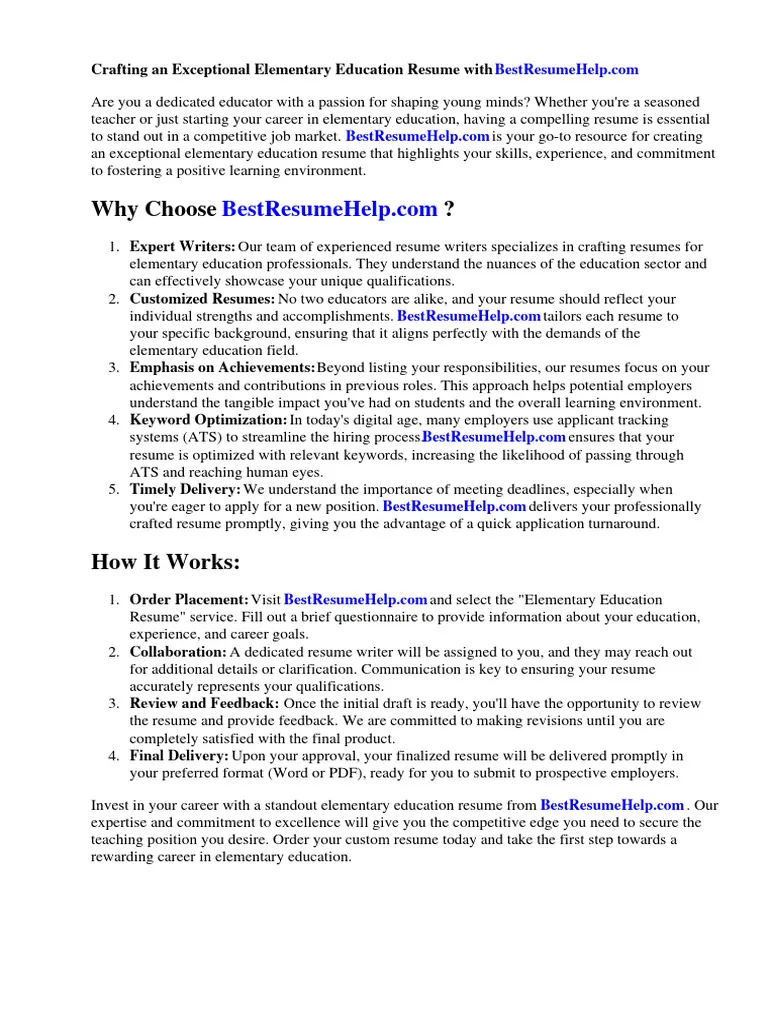
A well-formatted and error-free cover letter demonstrates professionalism and attention to detail. Sloppy formatting and grammatical errors can detract from your qualifications. Ensure your cover letter is easy to read and free of mistakes. Reviewing your letter ensures your message is clear and persuasive.
Formatting Best Practices
Use a professional and easy-to-read font, such as Times New Roman, Arial, or Calibri, with a font size between 11 and 12 points. Use standard one-inch margins and single spacing for the body of the letter. Keep the letter concise, ideally one page in length. Use clear headings and bullet points to break up text and make it easier to read. Maintain a consistent layout throughout your letter. Use clear headings and spacing to increase readability and make your points easier to understand. Ensure it’s easy to scan and understand.
Proofreading and Editing Techniques
Proofread your cover letter carefully for any grammatical errors, spelling mistakes, or typos. Use spell check and grammar check tools, but don’t rely on them entirely. Read the letter aloud to catch awkward phrasing and ensure the writing flows well. Ask a trusted friend or colleague to review your letter for a second opinion. Having a fresh pair of eyes will often identify errors you might have missed. Get feedback to improve the letter’s clarity.
Avoiding Common Mistakes
Avoid common mistakes that can undermine your cover letter. Do not use generic language or clichés. Avoid simply restating your resume; instead, provide additional context and details. Do not include irrelevant information or personal anecdotes. Always tailor the letter to the specific job and school. Avoid negative language or criticizing previous employers. Focus on your strengths and how you can contribute to the school. Being mindful of these common errors can help you create a stronger cover letter.
Proper Closing and Call to Action
The closing paragraph of your cover letter should leave a positive final impression. Express your gratitude for the reader’s time and consideration. Include a clear call to action, such as stating that you are eager to discuss your qualifications further and look forward to hearing from them. Provide your contact information again, including your phone number and email address. A strong closing demonstrates your enthusiasm and professionalism, encouraging the reader to take the next step in the hiring process.
Expressing Gratitude and Enthusiasm
Begin your closing paragraph by expressing your gratitude for the hiring committee’s time and consideration. Reiterate your enthusiasm for the teaching position and the school. State your interest in discussing your qualifications in more detail. This expresses your appreciation and reaffirms your interest in the role. Expressing gratitude shows you value the opportunity and appreciate their consideration.
Providing Contact Information for Follow-Up
End your cover letter with a clear call to action, inviting the reader to contact you for an interview. Include your phone number and email address once more, making it easy for them to reach you. Use a professional closing, such as ‘Sincerely’ or ‘Best regards,’ followed by your name. Make it easy for the hiring committee to contact you. Providing your contact details at the end helps to facilitate the next steps in the hiring process.
